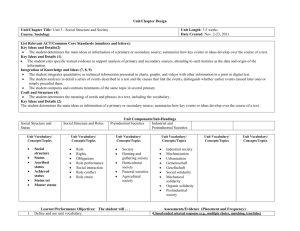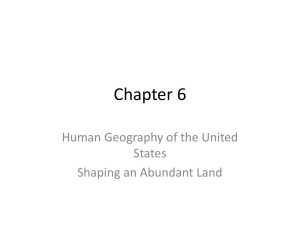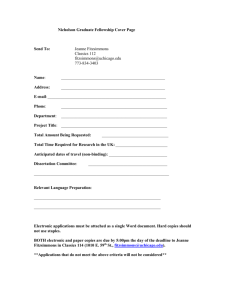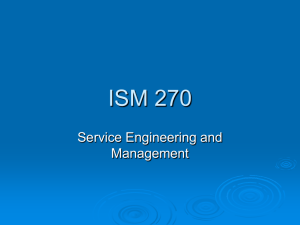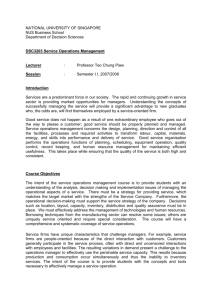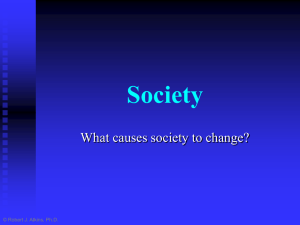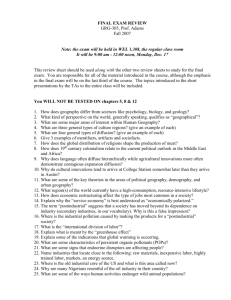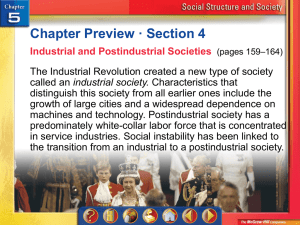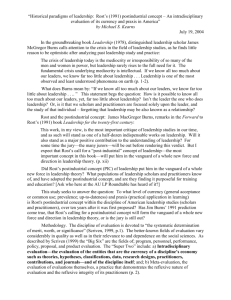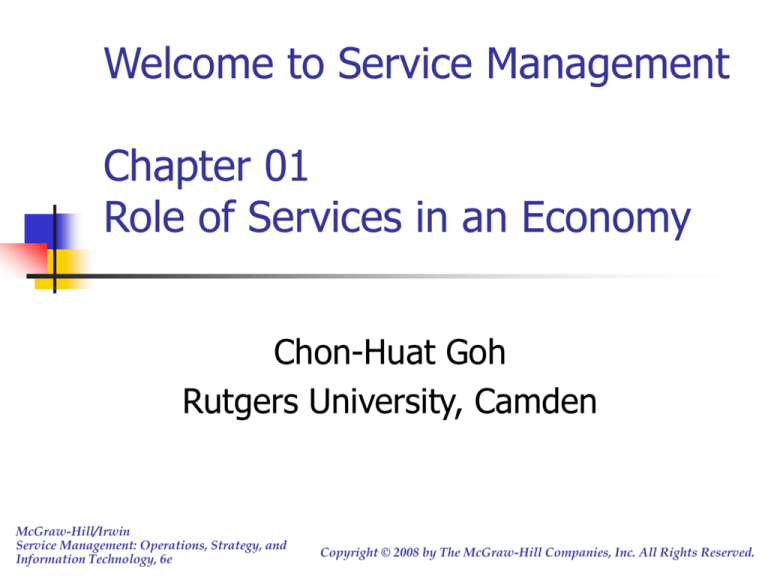
Welcome to Service Management
Chapter 01
Role of Services in an Economy
Chon-Huat Goh
Rutgers University, Camden
McGraw-Hill/Irwin
Service Management: Operations, Strategy, and
Information Technology, 6e
Copyright © 2008 by The McGraw-Hill Companies, Inc. All Rights Reserved.
Learning Objectives
Identify traits that all services have in common.
Discuss the central role of services in an economy.
Identify and differentiate the five stages of economic
activity.
Describe the features of preindustrial, industrial, and
postindustrial societies.
Describe the features of the new service economy.
Contrast the push vs. pull theories of innovation.
Identify the sources of service sector growth.
1-2
Service Definitions
Services are deeds, processes, and
performances.
Valarie Zeithaml & Mary Jo Bitner
A service is a time-perishable, intangible
experience performed for a customer acting
in the role of a co-producer.
James Fitzsimmons
1-3
Definition of Service Firms
Service enterprises are organizations
that facilitate the production and
distribution of goods, support other
firms in meeting their goals, and add
value to our personal lives.
James Fitzsimmons
1-4
Role of Services in an Economy
FINANCIAL SERVICES
· Financing
· Leasing
· Insurance
MANUFACTURING
Services inside company:
· Finance
· Accounting
· Legal
· R&D and design
BUSINESS SERVICES
· Consulting
· Auditing
· Advertising
· Waste disposal
INFRASTRUCTURE SERVICE
· Communications
· Transportation
· Utilities
· Banking
DISTRIBUTION
SERVICES
· Wholesaling
· Retailing
· Repairing
PERSONAL SERVICES
· Healthcare
· Restaurants
· Hotels
CONSUMER
(Self-service)
GOVERNMENT SERVICES
· Military
· Education
· Judicial
· Police and fire protection
1-5
Percent Employment in Services
Top Ten Postindustrial Nations
Country
1965
1975
1985
1995
2005
United States
59.5
66.4
70.0
74.1
78.6
United Kingdom
51.3
58.3
64.1
71.4
77.0
The Netherlands
52.5
60.9
68.3
73.4
76.5
Sweden
46.5
57.7
66.1
71.5
76.3
Canada
57.8
65.8
70.6
74.8
76.0
Australia
54.6
61.5
68.4
73.1
75.8
France
43.9
51.9
61.4
70.0
74.8
Japan
44.8
52.0
57.0
61.4
68.6
Germany
41.8
n/a
51.6
60.8
68.5
Italy
36.5
44.0
55.3
62.2
65.5
1-6
2000
1990
1980
1970
1960
1950
1940
1930
1920
1910
1900
1890
1880
1870
1860
1850
Proportation of total employement
Trends in U.S. Employment by
Sector
90
80
70
60
Service
50
Manufacturing
40
Agriculture
30
20
10
0
Year
1-7
Distribution of GDP in the US Economy
Product
Services
A
Physical
Information
B
6%
31%
37%
10%
53%
63%
C
D
16%
84%
1-8
Stages of Economic
Development
Society
Game
Predominant
Activity
PreIndustrial
Against
Nature
Agriculture
Mining
Industrial
Against
Goods
Machine Individual
fabricated production
tending
nature
Postindustrial
Among
Services
Persons
Use of
Human
Labor
Standard
Unit of
of Living
Social Life Measure Structure
Raw
muscle
power
Extended
household
Subsistence
Quantity
of goods
Technology
Routine
Simple hand
Traditional
tools
Authoritative
Bureaucratic Machines
Hierarchical
Artistic
Community Quality of
InterCreative
life in terms dependent
Intellectual
health,
education,
recreation
Information
1-9
Economic Evolution
Economy
Agrarian
Industrial
Service
Experience
Economic
Offering
Food
Packaged
goods
Commodity
service
Consumer
services
Business
services
Function
Extract
Make
Deliver
Stage
Co-create
Nature
Fungible
Tangible
Intangible
Memorable
Effectual
Attribute
Natural
Standardized
Customized
Personal
Growth
Method of
Supply
Stored in
bulk
Inventoried
Delivered on
demand
Revealed over
time
Sustained over
time
Seller
Trader
Producer
Provider
Stager
Collaborator
Buyer
Market
Customer
Client
Guest
Collaborator
Expectation
Quantity
Features
Benefits
Sensations
Capability
1-10
The Four Realms of an Experience
Customer Participation
Passive
Active
Absorption Entertainment Education
(Movie)
(Language)
Environmental
Relationship
Immersion Esthetic
(Tourist)
Escapist
(ScubaDiving)
1-11
Experience Design Principles
Theme the Experience (Forum shops)
Harmonize Impressions with Positive Cues
(O’Hare airport parking garage)
Eliminate Negative Cues
(Cinemark talking trash containers)
Mix in Memorabilia (Hard Rock T-shirts)
Engage all Five Senses (Mist in Rainforest)
1-12
Source of Service Sector Growth
Information Technology (e.g. Internet)
Innovation
Push theory (e.g. Post-it)
Pull theory (e.g. Cash Management)
Services derived from products (e.g. Netflix)
Exploiting information (e.g. Auto part sales)
Difficulty of testing service prototypes
Changing Demographics
Aging of the population
Two-income families
Growth in number of single people
Home as sanctuary
1-13
Typology of Services in the 21st Century
Core Experience
Essential Feature
Examples
Creative
Present ideas
Advertising, theater
Enabling
Act as intermediary
Transportation, communications
Experiential
Presence of customer
Massage, theme park
Extending
Extend and maintain
Warranty, health check
Entrusted
Contractual agreement
Service/repair, portfolio mgt.
Information
Access to information
Internet search engine
Innovation
Facilitate new concepts
R&D services, product testing
Problem solving
Access to specialists
Consultants, counseling
Quality of life
Improve well-being
Healthcare, recreation, tourism
Regulation
Establish rules and regulations
Environment, legal, patents
1-14


